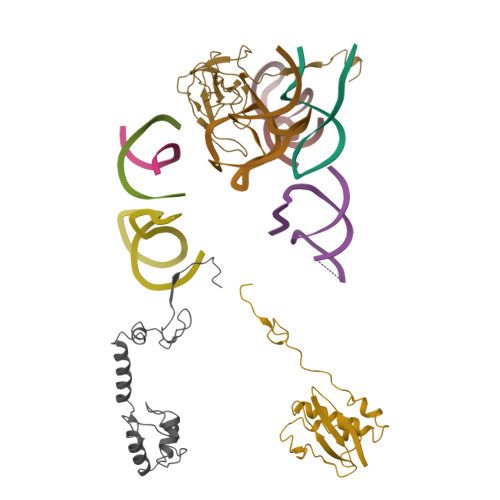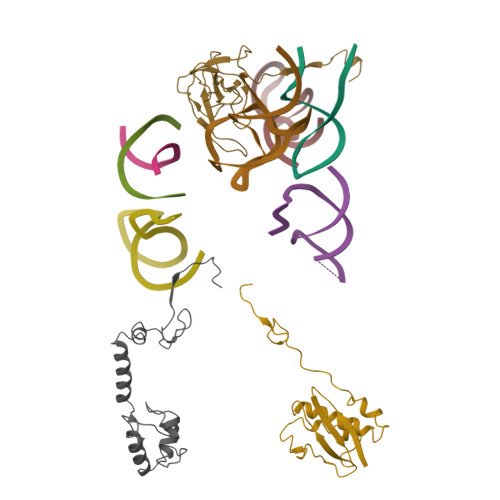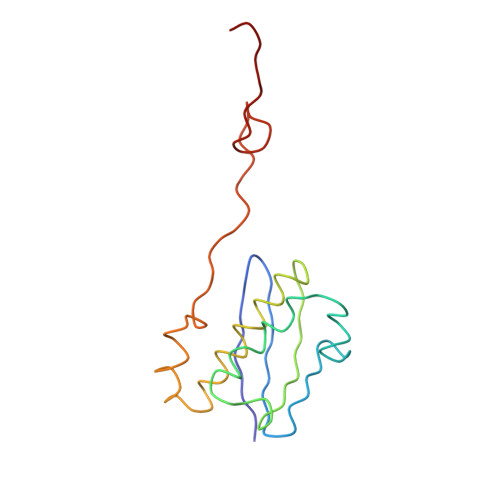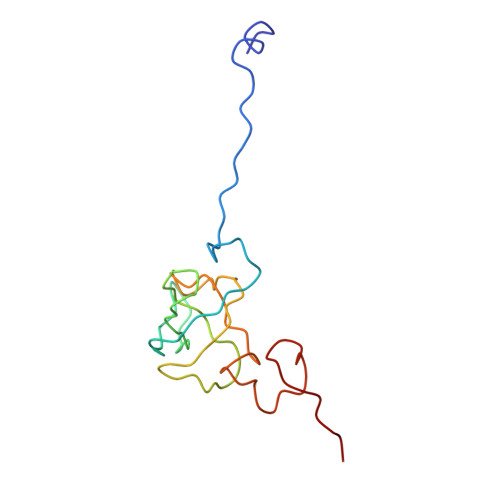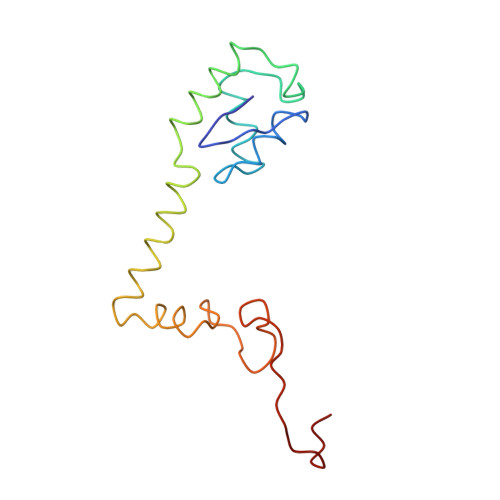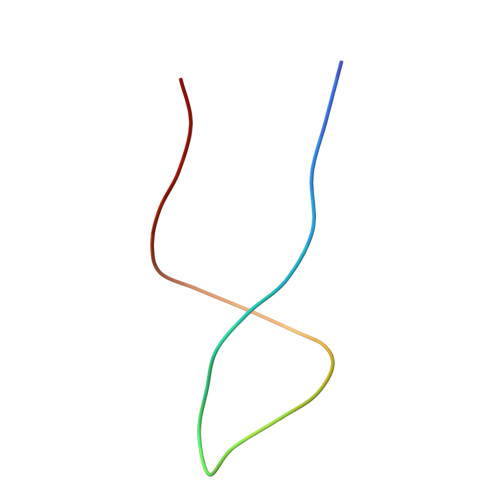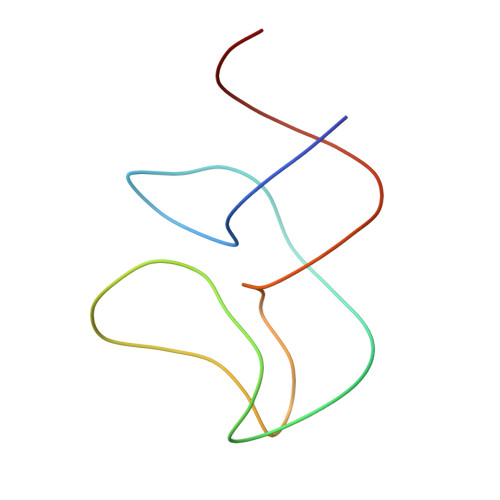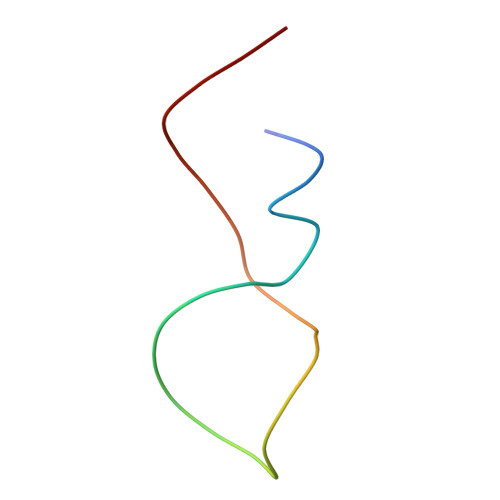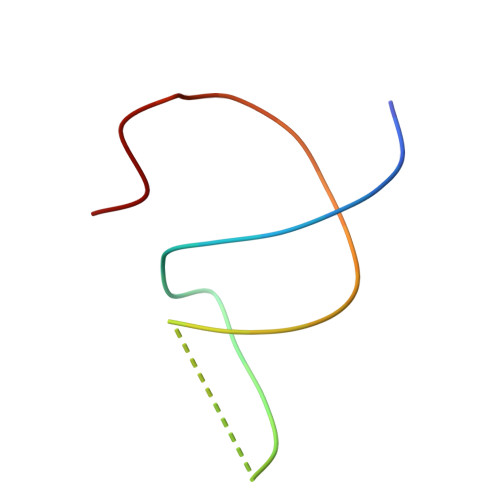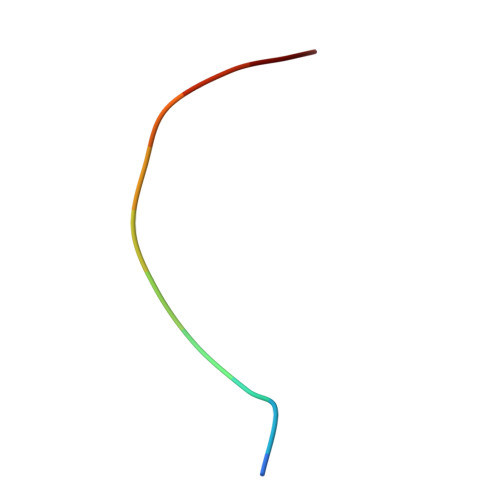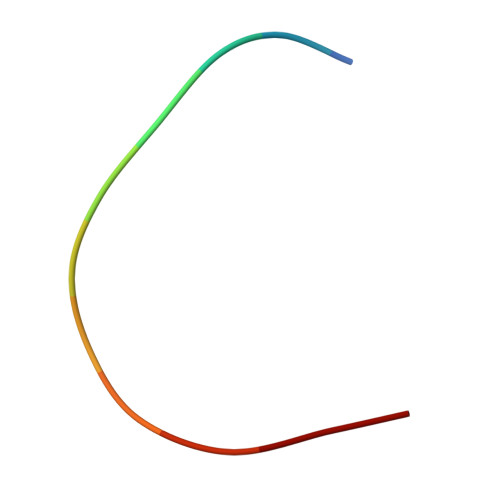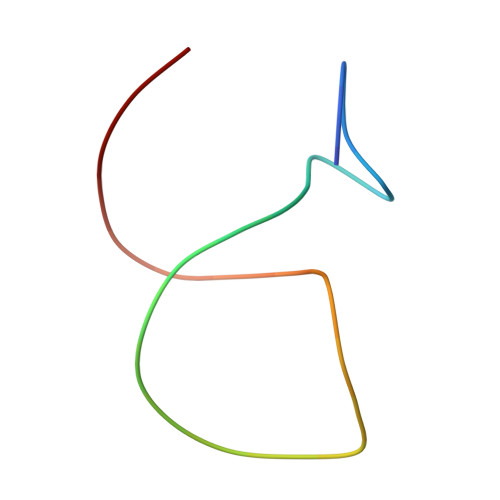Structural aspects of RbfA action during small ribosomal subunit assembly.
Datta, P.P., Wilson, D.N., Kawazoe, M., Swami, N.K., Kaminishi, T., Sharma, M.R., Booth, T.M., Takemoto, C., Fucini, P., Yokoyama, S., Agrawal, R.K.(2007) Mol Cell 28: 434-445
- PubMed: 17996707
- DOI: https://doi.org/10.1016/j.molcel.2007.08.026
- Primary Citation of Related Structures:
2DYJ, 2R1C, 2R1G - PubMed Abstract:
Ribosome binding factor A (RbfA) is a bacterial cold shock response protein, required for an efficient processing of the 5' end of the 16S ribosomal RNA (rRNA) during assembly of the small (30S) ribosomal subunit. Here we present a crystal structure of Thermus thermophilus (Tth) RbfA and a three-dimensional cryo-electron microscopic (EM) map of the Tth 30S*RbfA complex. RbfA binds to the 30S subunit in a position overlapping the binding sites of the A and P site tRNAs, and RbfA's functionally important C terminus extends toward the 5' end of the 16S rRNA. In the presence of RbfA, a portion of the 16S rRNA encompassing helix 44, which is known to be directly involved in mRNA decoding and tRNA binding, is displaced. These results shed light on the role played by RbfA during maturation of the 30S subunit, and also indicate how RbfA provides cells with a translational advantage under conditions of cold shock.
Organizational Affiliation:
Laboratory of Structural Pathology, Division of Molecular Medicine, Wadsworth Center, New York State Department of Health, Empire State Plaza, Albany, NY 12201-0509, USA.








